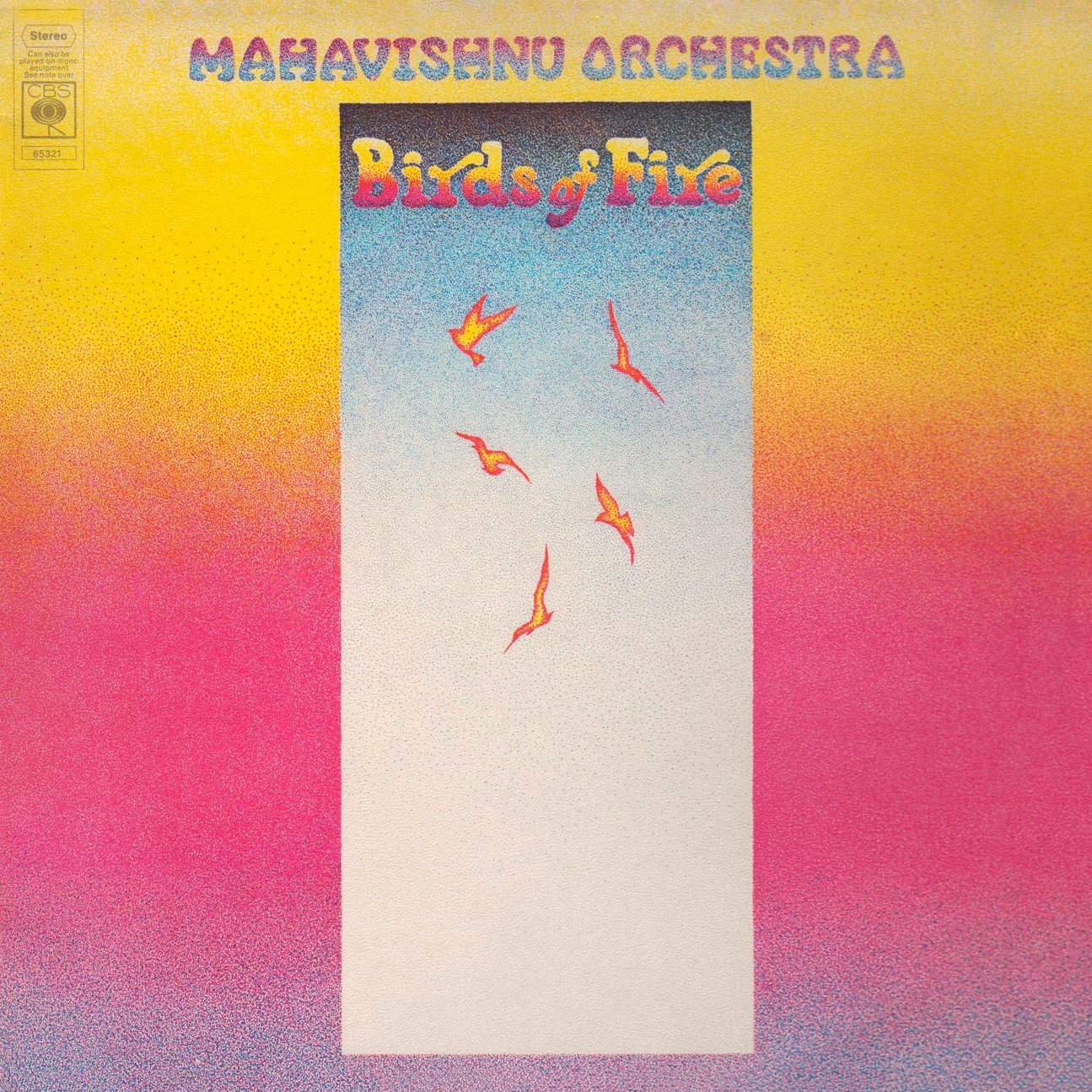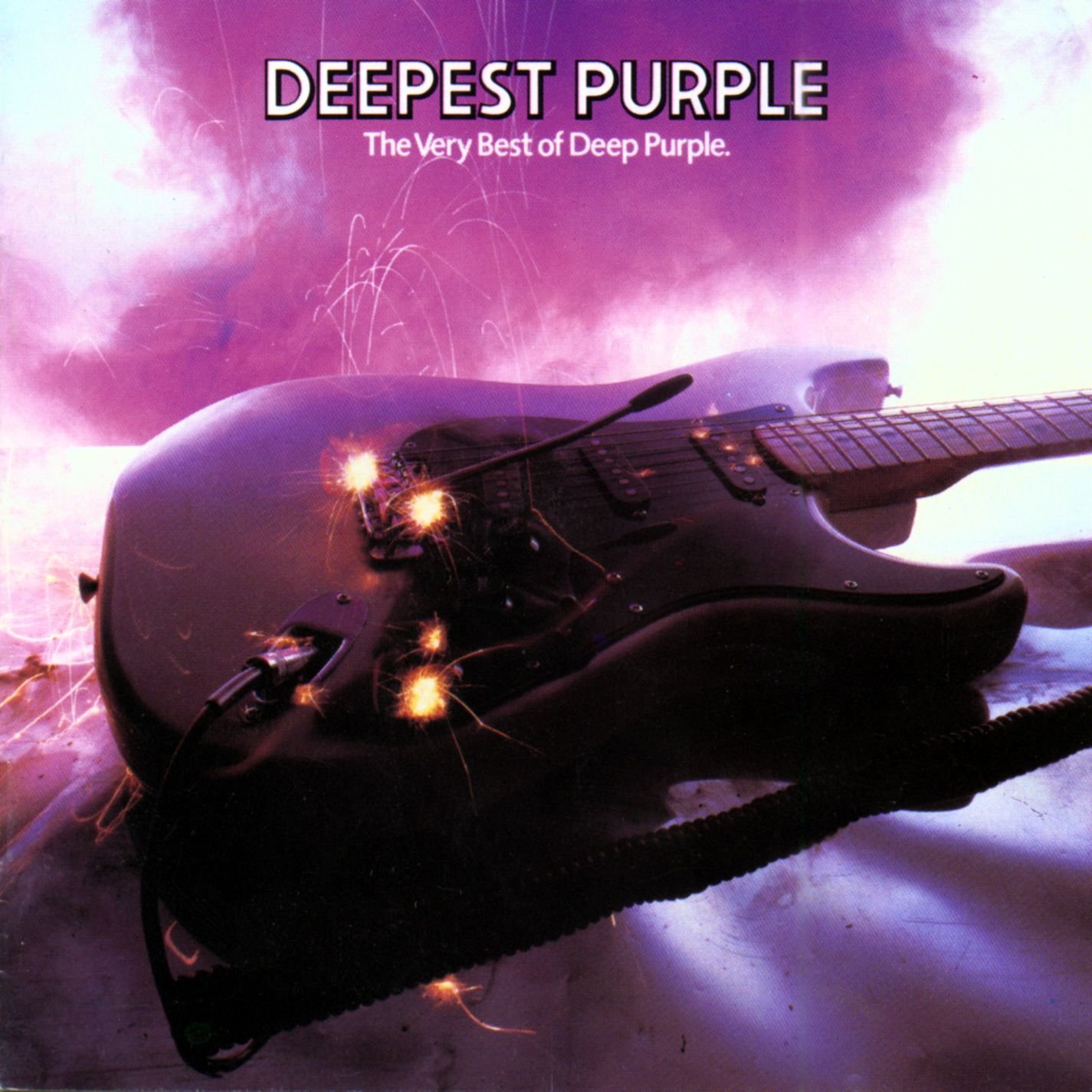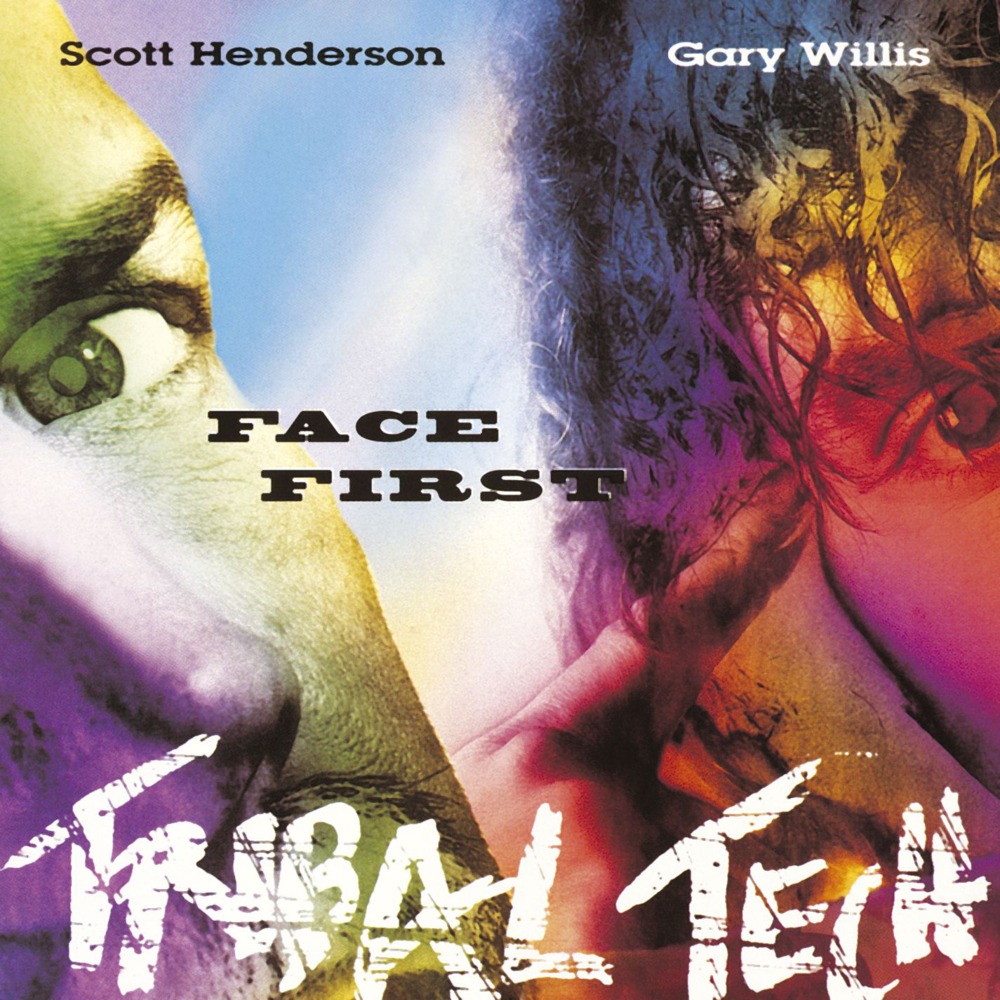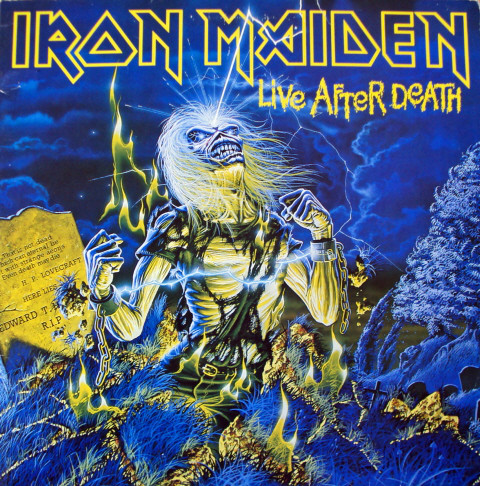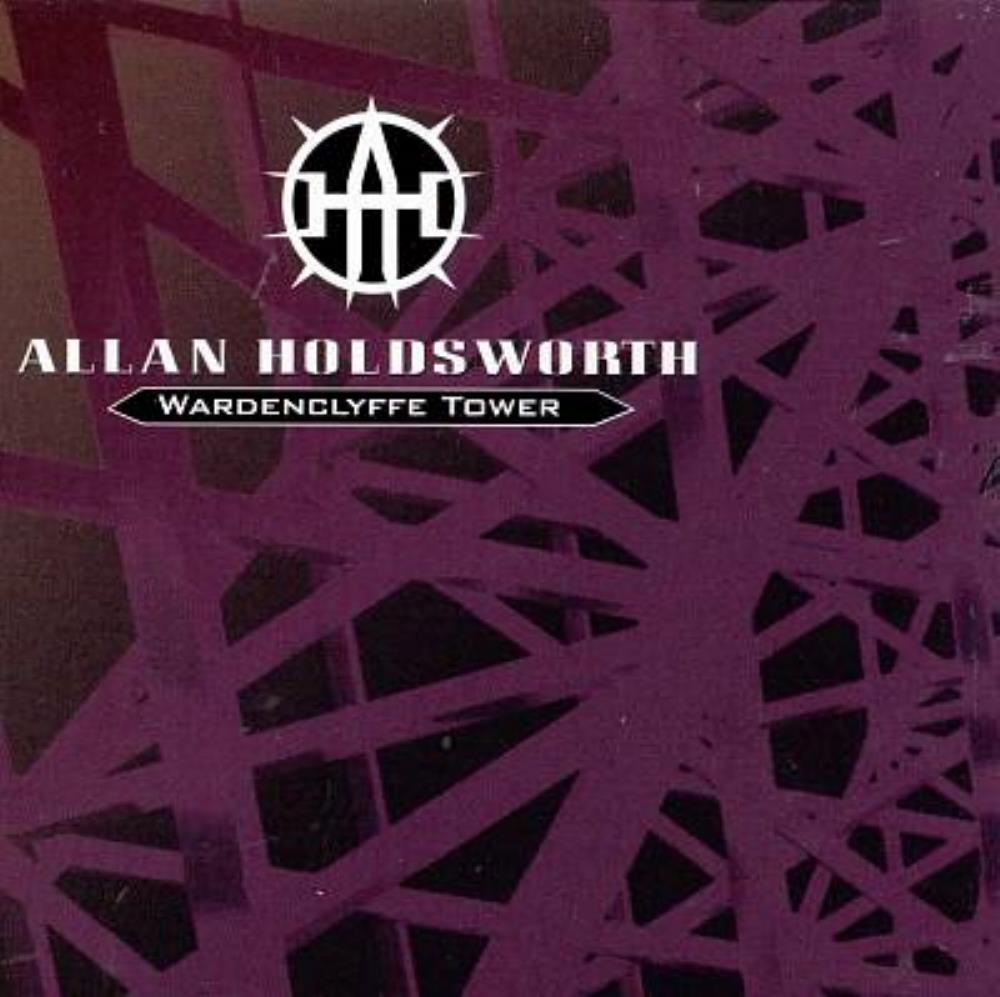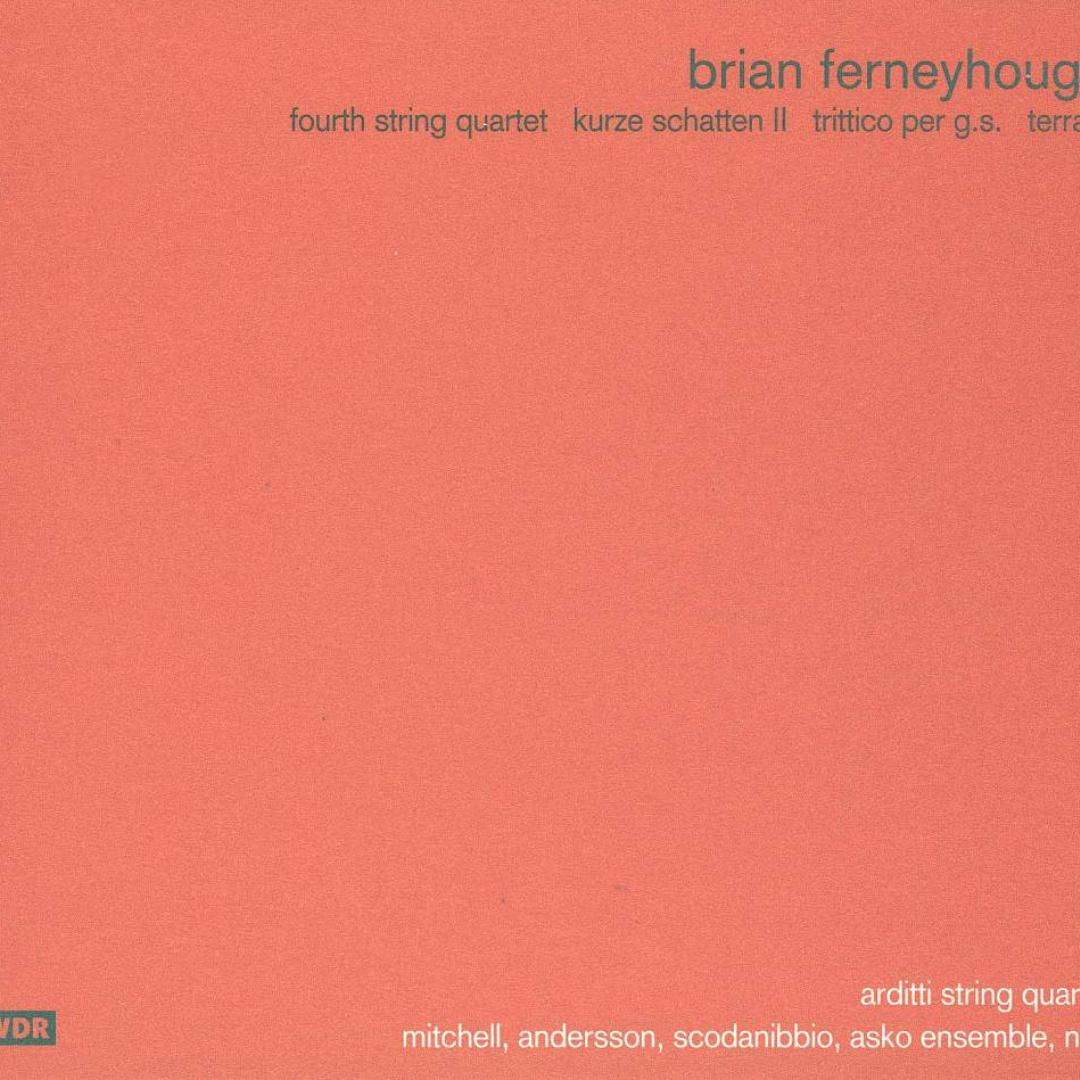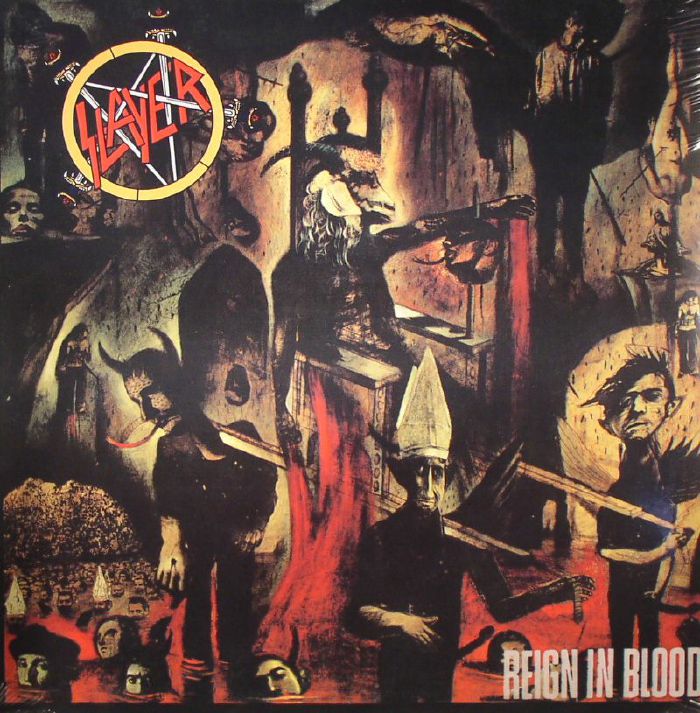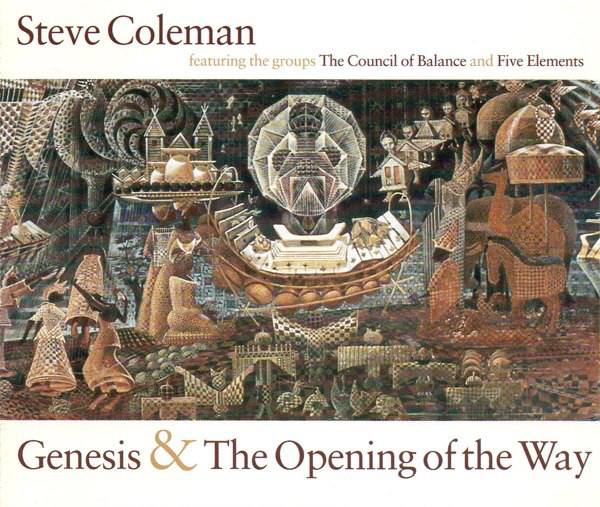Intertwined Threads
An autobiographical Playlist
—Wieland Hoban
An autobiographical Playlist
—Wieland Hoban
This playlist is based on autobiographical considerations. It’s not a list of recommendations, things I’ve been listening to lately, things to watch out for or anything in that direction, but rather a list of music that had a crucial impact on me as a young listener and budding creator of my own music. It features examples from the three genres that have been most important to me for decades: modern ‘classical’ music, metal and jazz (especially guitar-driven fusion). It therefore leaves out all the other music that’s important to me, such as the whole tradition of Western art music from the Middle Ages to Romanticism, Indian classical music or various Middle Eastern musics, focusing on experiences mostly from my teens that could be characterised as ‘jaw-dropping’, ‘eye-opening’ etc. Although the mixture is perhaps unusual, most of the individual works are hardly obscure within their respective genres. Because stylistic rotation makes for a more interesting playlist than chronological order, I’ll be shifting back and forth constantly between different points in my development.
Liner Notes
Mahavishnu Orchestra, Birds of Fire
from Birds of Fire, Columbia Records 1973
The Mahavishnu Orchestra, a quintet led by the English guitarist John McLaughlin, released the album Birds of Fire in 1973, a year after their debut The Inner Mounting Flame. While McLaughlin had initially come from a traditional jazz and blues background, he had soon gravitated towards the louder electric sound of rock and played in Miles Davis’s band at the time when Davis was moving in that direction himself, contributing to the seminal Davis albums Bitches Brew and In a Silent Way. That’s why the Mahavishnu Orchestra has always been considered part of jazz history despite making music that didn’t sound much like jazz at all.
I discovered this music in the summer of 1992, at the age of fourteen. After getting an acoustic guitar and starting lessons at thirteen, I had acquired an electric the following year, perhaps three months before hearing this music. I knew that McLaughlin was one of the greats in the field of jazz guitar and had heard some of his recent work, in which he played acoustic; but I knew he had made very influential electric recordings in earlier times and was keen to hear some. While on family holidays, I bought a double CD compilation featuring tracks from various albums he had released in the 70s, including the first two Mahavishnu Orchestra discs. I didn’t know what to expect. From the first moments of the opening track, ‘Meeting of the Spirits’ (the opening cut from The Inner Mounting Flame), my jaw was firmly on the floor. The mixture of 70s rock sounds, virtuosic extended improvisations, disorienting rhythms and an ‘exotic’ colour that is difficult to define (people often refer to Indian influences because of McLaughlin’s engagement with Indian music, but there are barely any actual Indian elements) was unlike anything I’d heard before and simply floored me. The compilation included four tracks from each of those first two albums and all of them made a similarly profound impression on me, but it was probably ‘Birds of Fire’ that I found most addictive and ecstatic. The time signature is 9/8, but the listener is tricked by the simultaneity of two different rhythmic divisions: the repeating riff in the violin and bass guitar groups the beats as 4+5, while Billy Cobham’s pulsating drums follow the more common 3×3 pattern. After setting the mood with mysterious arpeggiated chords in tandem with the keyboard, McLaughlin plays a melody that grips the guts and the spirit like some eastern Hendrix, and the combined effect is at once meditation and catharsis. He proceeds to improvise, his solo escalating to an almost unbearable intensity. The track’s musical material is fairly limited, and its impact comes more from the union of trance-like repetition and visceral passion than a diverse array of ideas. The ecstasy ended after a little under six minutes, leaving me exhausted and inspired.
Béla Bartók, String Quartet No. 5, 1st movt.
Composed 1934 and published 1936
By the time I heard Bartók’s fifth and sixth string quartets in 1993, on an LP in my father’s highly diverse collection (more on that later), I was somewhat dissatisfied with the point I’d reached musically. My tastes had matured and I appreciated a considerable range of music, but I felt myself reaching creatively for something I couldn’t quite identify and lacked the tools to take my own guitar-based music where I wanted to be. Although I’d been playing classical music since childhood, first on the flute and then the guitar, I didn’t listen to a great deal and hadn’t yet familiarised myself with the major changes that took place from the early years of the twentieth century. I was curious to learn more, so I listened to the one record of Bartók’s music that was in the house. It was exactly what I’d been looking for: the propulsive force and physicality of vigorous, often asymmetrical rhythms combined with a complex harmonic language, wide range of instrumental colours and frequent use of fierce dissonances – and the piece was written in 1934! At that point I realised that a) this was the music I wanted to explore and b) I had to compose a string quartet. So I did. I also turned my back on the electric music I’d listened to for the last years, feeling that this purge was necessary in order to become a ‘serious’ composer.
Deep Purple, Speed King
from Deepest Purple, Parlophone 1970
Although I was musically interested and active from a relatively early age, I didn’t initially have a clear direction. My father, a writer, always listened to music while working, and in my childhood, I remember mostly jazz greats like Thelonius Monk, Charlie Parker or Miles Davis playing in his study. His collection was wide-ranging, and I listened my way through a somewhat random mixture of music including the Beach Boys, Handel organ concertos and even some country singers. I enjoyed all of it in some way or other, but the first cassette of his where I felt drawn to the music in an elemental way was the compilation Deepest Purple by the English hard rock band Deep Purple, featuring classics from the 70s like ‘Smoke on the Water’, ‘Black Night’ or ‘Highway Star’. Although I would soon explore the sounds of metal in its harsher varieties, this was certainly the heaviest music I’d heard when I first listened to it at the age of nine. The album is full of winners, but my reason for choosing ‘Speed King’ is the utter slap in the face it delivered to me, which is made all the greater by the misleadingly solemn organ intro supplied by Jon Lord, more evocative of a church service than a rock performance, before the band erupts into action with Ian Gillan’s shrieking (but very proficient) vocals. The organ has another prominent episode later on in an exchange of licks with Ritchie Blackmore’s guitar, starting with a relaxed, almost cocktail bar feeling but quickly escalating. For all its raucousness, the performance had a skill and virtuosity that elevated it above the rock I’d heard until then.
Tribal Tech, Salt Lick
from Face First, Mesa/Bluemoon Recordings 1993
By the time I bought Tribal Tech’s album Face First in 1993, I was devoted to the (mostly electric) guitar and very interested in jazz fusion. That devotion involved reading as many guitar magazines as I could afford, and the names of Scott Henderson (guitar) and Gary Willis (bass) often came up, whether in interviews, album reviews, gear ads or columns with technique tips. As I was reliant on my pocket money, I couldn’t afford to buy all the music that interested me, but when I did get around to their band Tribal Tech, this album had just come out and I was keen to have a listen. It was an instantly appealing mixture of funky grooves and tasteful virtuosity, with a clear personality despite a range of influences that shifted in weighting from one track to the next, from the upbeat Weather Report-esque drive of the opening title track to slide guitar or more abstract synth chord sequences. Scott Henderson’s playing combines the digging in of blues-rock players like Stevie Ray Vaughan (especially in the explicit homage ‘Boat Gig’) with the more harmonically ambiguous lines of modern jazz, often dancing around tonal centres before unexpectedly landing on a juicy bend. I’ve chosen ‘Salt Lick’ because it immediately appealed to me with the muscular riffing of the opening section, which points in the direction of progressive hard rock, before unexpectedly navigating between different moods and tempos, including manic bebop episodes and lazy blues shuffles, over its nine-minute duration. All players get their chance to shine, and the cheerfully cheesy synth in the refrain is offset by the microtonal bending inflections of the keyboard in its later solo. The combination of looser sections and fixed material perfectly exhibits the flexibility of the fusion genre, not to mention the outstanding musical rapport between the band members.
Iannis Xenakis, Tetras
1983
It was 1995, and my focus had switched once and for all from electric guitar to twentieth-century ‘classical’ music. Inspired by my Bartók experience I had written three string quartets of my own, and avoided the problem of limited personal funds by using various music libraries as extensively as possible, which, fuelled by the same passion I had previously had for the guitar, allowed me to accumulate a considerable breadth of knowledge within a short time. Although I had acquainted myself with all kinds of orchestral, vocal and chamber music, the string quartet still held a special importance for me. The four instruments were enough to present dense, complex textures while allowing greater transparency than a larger ensemble or orchestra; they combined a wide range of possible sonorities with sufficient homogeneity for a powerful joint effort, and in that sense the string quartet could be seen as the successor to the four- or five-piece jazz, rock and metal bands that had been my focus in the preceding years. This affinity soon led me to the Arditti String Quartet, whose predilection for jagged modernist repertoire meant that I could generally rely on their recordings to provide musical encounters that appealed to me. Iannis Xenakis, one of the greats of post-war musical modernism, was most famous for the massed textures of his orchestral works and his application of statistical principles; there seemed to be less of a focus on his chamber music in academic texts and concert life, so I was excited to find a double CD of chamber works featuring the Ardittis. Although the sound world immediately appealed to me at a visceral level, it took me a while to come to terms with the use of pitch, which sometimes seemed very natural, even elemental – especially in the fierce glissando figures that open the string quartet Tetras – but at other times abstract and opaque. Working my way through the pieces on this set, where the quartet is joined by the pianist Claude Helffer and presents works for several different instrumental combinations from solo to quintet, eventually gave me an understanding of Xenakis’s musical language that then enabled me to appreciate the larger-scale works. Nonetheless, I still feel closer to the chamber music, and Tetras has remained my favourite.
Iron Maiden, The Trooper
from Live After Death (recorded at Long Beach Arena, California and Hammersmith Odeon, London during the band’s World Slavery Tour), originally released in October 1985 on EMI in Europe and its sister label Capitol Records in the US
After the revelation of Deepest Purple, I became curious to hear some music in the genre of metal that followed the 70s hard rock of Deep Purple and Black Sabbath. I had seen various posters of a band called Iron Maiden, mostly with exciting demonic images (featuring the band’s mascot Eddie, I would soon learn, who appears on every album cover in a slightly different guise). As my tenth birthday was approaching, I told one of my school friends in advance of the party that I would like an Iron Maiden cassette as a present. This was 1988, and they had just released Seventh Son of a Seventh Son, which I duly received. There was no slap in the face this time, as there wasn’t enough of an increase in heaviness over Deep Purple to shock me in the same way, but what was new was an element of epic pathos and seriousness. While Purple still spoke the language of rock’n’roll, with songs about fast cars and loose living, Maiden tended towards fantasy, war or horror. I didn’t yet have an idea of their style, so I didn’t realise that the synthesisers and ‘progressive’ elements here were something of a novelty after appearing for the first time on the Somewhere In Time album two years earlier. I listened many times and immersed myself in the album, deciding that this was now my favourite band. Not long after that, I bought the Killers album from 1981, attracted by the gruesome cover, and was taken aback by the difference in style. Not only was the overall sound rawer and more punky; in addition, the melodic and somewhat melodramatic vocals of the current singer Bruce Dickinson were replaced by those of his predecessor Paul Di’Anno, whose rougher style evoked the street more than the big stage. I ultimately enjoyed this album too, but still found it hard to reconcile the differences between this and Seventh Son. Accordingly, my next purchase offered a cross-section of their work from the first half of the 80s: the live double album Live After Death. Like compilations, live albums give buyers access to material from different albums without having to buy them all first, which is especially useful when one’s funds are limited to a child’s pocket money. This finally gave me an idea of the stylistic thread uniting the two contrasting albums I had listened to until then. It also gave me an aural taste of this music in its concert setting, something that was very hard for me to imagine at the age of ten or eleven. I was particularly taken by ‘The Trooper’, with its drama, memorable use of twin lead guitar lines, and impressive solos. Compared to the studio version from 1983’s Piece of Mind album, Dickinson’s vocal performance was pretty sloppy; the higher registers in particular showed a great deal of approximation rather than precision. When I bought Piece of Mind, I noted the more accurate vocals but missed some of the energy of the live version. This is the typical contrast, even dilemma when it comes to live and studio versions. Too much sloppiness can weaken the overall performance, obviously, but the right combination of roughness and control can give a live version that edge of vitality over a studio recording that may well seem safe and sterile by comparison.
Allan Holdsworth, Zarabeth
from Wardenclyffe Tower, Allan Holdsworth 1983
Around the same time I bought Face First, I finally acquired some music by Allan Holdsworth, one of the other big names in the fusion guitar scene: his latest record, Wardenclyffe Tower. One of the things most often said about Holdsworth by his admirers is that he was in a musical world of his own, playing in a way that no one else did and no one else could. McLaughlin was my favourite guitarist and I wished I could play like him; Henderson was someone whose stylistic makeup I could strongly relate to. With Holdsworth it was quite different: the music enthralled me as something remote and exotic, something whose beauty captivated me but which I would never try to imitate. In contrast to the aggressive picking and frequent bends employed by McLaughlin and Henderson, Holdsworth’s soloing style was mostly legato, with an overdriven but smooth tone and cascades of notes moving in all sorts of harmonically mystifying directions. The frequently daunting leaps of register were facilitated by the huge reach of his hands, his slender fingers crawling all over the fingerboard like spiders. This was also a factor in his use of unusual chord voicings, which often contain close harmonies that, ironically, require the fingers to be placed far apart in awkward positions. Another factor in Holdsworth’s style is the fact that, irony of ironies, he never really wanted to be a guitarist! As a boy, he wanted to play the saxophone and sound like John Coltrane, but his father gave him a guitar instead. His family wasn’t affluent and he made do with what he was given, so the fact that he developed this remarkably fluid legato style was due largely to the fact that he was trying to play the guitar like a saxophone. This was made easier by the development in the 1980s of the SynthAxe, a hybrid of synthesiser and guitar that was in fact a MIDI controller triggering sounds from a synth module. It was a rare and expensive instrument, and few guitarists used it as much as Holdsworth; it was discontinued in the 90s. While it was more suited to his spiralling legato lines than the standard guitar, it did lack something that was another key feature of Holdsworth’s style: the use of radiant clean tones for his chordal material. He used these sonorities to craft hybrid melody/harmony lines that could be seen as a continuation of the solo comping technique of traditional jazz guitarists like Joe Pass. This is how he begins ‘Zarabeth’, where the wistful melody is rescued from sentimentality by the subtle dissonances of the underlying harmonies. Some listeners find his soloing style tedious and cold, but for those who appreciate it, the soaring elegance of his playing is on full display in this track. As in much fusion, synthesiser sounds don’t always age well, and the choir patch at the end may cross the line into kitsch for some. But it doesn’t change the melancholy beauty of the notes.
Brian Ferneyhough, Terrain
Recorded 1991-1994
I first heard of Brian Ferneyhough on a summer course with the composer Steve Martland in 1994, and not in a positive way: Martland, a post-minimalist with a very pragmatic musical mindset, scoffed at the absurdity of Ferneyhough’s complex notation, insisting that for all the many details of the textures, what results is just grey monotony. Despite this dismissive characterisation, the description actually made me very curious to hear the music and find out for myself whether that was true. There were few commercial recordings available at the time, but I had the opportunity not long afterwards to hear a whole evening’s worth of his music when Radio 3 broadcast his cycle of works Carceri d’Invenzione, consisting of seven pieces for varied forces including piccolo and violin solos, song settings and ensemble works. There was also a short interview giving a little insight into the music. It was a lot to take in, and I ate it up. The pieces for large ensemble present the listener with a fairly dizzying number of intersecting layers and constantly shifting sonic landscapes, and the emphatically active mode of listening it demands was something that struck me as crucial to the modernist aesthetic I was developing. My next purchases were scores of one or two of those pieces, then a CD of string quartets recorded by the Ardittis. A book of Ferneyhough’s collected writings and interviews was published soon after that, and I immersed myself in his artistic and intellectual world, which I felt having an increasing influence on my compositional approach. The book had numerous score examples, many of them from works I hadn’t yet heard, so I was eager to get to know those and saddened by the lack of available recordings. But I soon read that a CD featuring a number of them was forthcoming, and placed a pre-order. It was meant to be released in 1996, but, like the writings, was delayed by a few months and only arrived the following year. After many months of curiosity about how those examples in the book really sounded, it was very satisfying to hear them at last, and the four pieces all had different instrumentations: string quartet with guest appearances by a soprano singer, then solo guitar, solo double bass and finally violin with an eight-piece ensemble. Although the string quartet was still my favourite line-up and the guitar was naturally close to me, I was most curious to hear the last of those, Terrain, featuring Irvine Ardittias the soloist. His performance is electric throughout; the solo part is a relentless tour de force, but of a jagged kind that combines the visceral with the acrobatic. The piece’s two main sections, separated by a violin cadenza, are contrasting in their ensemble treatment and interaction between the violin and the other instruments; the first works with quite transparent textures where individual figures come to the fore and the action is punctuated with crisp brass accents, creating enough space for the violin and ensemble to interact without obscuring one another. In the second section, however, the ensemble instruments seem to drift along more aimlessly, with occasional outbursts but a frequently amorphous character, while the violin races along, seemingly going straight ahead with little regard for the others as if playing alone. The elegant descent of the splintered closing violin figure, accompanied by fading wind chords, leaves this discrepancy unresolved and calls out for further listens.
Slayer, Angel of Death
from Reign in Blood, Def Jam Recordings 1986
The year I became a metal fan, 1988, saw the release of albums now considered seminal by bands like Iron Maiden, Metallica, Megadeth and Slayer. In the case of Slayer, the album South Heaven (which I would only buy a year or so later) received a mixed reception; after playing a major part in founding the thrash metal genre, a faster and harder form of metal than that played by Iron Maiden or Judas Priest, the band had retreated slightly from the speed and aggression that had made them stand out in favour of more brooding, atmospheric songs (which still appeared alongside faster ones). This had displeased some fans after what many referred to as a landmark of the genre and a work of unparalleled evil and intensity, 1986’s Reign in Blood. It was probably some time in 1989 that I finally got the cassette of that classic, and I instantly understood why some had found South of Heaven too tame: from the first to the last second of this album, whose duration of a mere 28 minutes is below the usual LP length, Slayer treat the listener to a scorching orgy of speed, an infernal blast of demonic yet perfectly controlled violence. Unlike most thrash albums until then, whose power had been slightly hampered by low-budget productions with thin guitar tones and clattering drums, the instant onslaught of the opener ‘Angel of Death’ made it clear just how impressive this music could sound when the guitars were given a hefty tone that matched sharpness with weight, and the drum sound was both crisp and rumbling. Everything about the song was more vicious than other music, from the roaring tremolo riffing of the first seconds, followed by Tom Araya’s high-pitched scream, to the frenzied alternating guitar solos by Jeff Hannemann and Kerry King, whose apparent note gibberish was less random than it seemed, a quality that scores of subsequent imitators would often fail to capture. All this was underpinned by the pounding drums of Dave Lombardo, who showcased his fast foot technique (not remarkable now, but certainly then) with a brief double bass drum outburst. At over five minutes, the song stands out from the others, which mostly last between two and three minutes and race past long before anything resembling boredom can set in. It also differs in its subject matter, portraying the sadistic Nazi doctor Joseph Mengele, while the other songs – like most of the band’s material until then – present variations on the themes of devil worship, murder and general evildoing. Together with its eminently screamable chorus, these things have made it one of the band’s most enduring songs, and a live set without it – usually as the finale – would be utterly inconceivable.
Steve Coleman & Five Elements, Pi
from The Opening of the Way, BMG France 1997
In 1998 I moved to Frankfurt to study composition, and roughly a month before term started, I went to some of the concerts at the city’s annual jazz festival, a veritable institution since 1953. The performance that made the greatest impression on me was by the American saxophonist Steve Coleman, who appeared with his band Mystic Rhythm Society (one of various related formations). While his harmonically advanced playing could be traced back to the bebop tradition, what was more unusual was the music’s rhythmic weight, with looping bass guitar grooves, insistent drums and various Cuban percussion. Like the sounds of the Mahavishnu Orchestra that had seized me so intensely six years earlier, the music combined the potential monotony of repeating phrases with a strong rhythmic and harmonic language that was harder to pin down. I took the next opportunity to buy the band’s most recent CD, Myths, Modes and Means, which featured much of what had captivated me at the concert. I gradually bought more of Coleman’s CDs, mostly with the group Five Elements (which hardly differed from the Mystic Rhythm Society), and the double CD Genesis & The Opening of the Way was a particularly intriguing one, featuring a large ensemble with string players and numerous wind soloists on the first disc and a smaller, more nimble band on the second. Although I was far more focused on modern classical music than jazz in general, it was the lively, jazzier second CD, The Opening of the Way, that spoke to me more than the brooding, dense ensemble textures of the first. One of my favourite tracks was ‘Pi’, perhaps the most angular on the album. The relentless rhythmic drive almost masks the fact that despite repeating phrases, it’s hard to make out any consistent time signature, especially with the cunning syncopations of Sean Rickman’s drumming, which seems to pay little attention to the idea of bar lines but is always in lockstep with the rest of the band. To me, this track epitomises Coleman’s unique combination of the cerebral and the visceral, the simple and the complex.
Listen here – this track is currently unavailable on Spotify so couldn’t be included in the playlist; it has been substituted with Steve Coleman’s ‘Black Phonemics’.
Morbid Angel, Blasphemy
from Altars of Madness, Combat Records/Earache Records 1989
Although I didn’t realise it at the time, I discovered metal at a very exciting time, especially for the more extreme varieties of the genre. Proceeding from Iron Maiden to Slayer, I had followed an increasing appetite for more intensity, more heaviness and more speed. The shouted vocals of thrash metal were already a step away from the singing style of traditional metal, and a new subgenre had become visible that took this yet further, with frequently unintelligible throaty growls replacing the shouts. The way for this subgenre, known as ‘death metal’, had been paved by thrash bands like Possessed (who even had a song called ‘Death Metal’) and Sodom (who appeared on a compilation of that name), but with the addition of slower, morbid elements introduced by bands like Celtic Frost or Hellhammer. 1988 had seen the release of Death’s second album Leprosy, which combined the fast beats of thrash with leaden sections of ominously slow material, as well as harsh growled vocals. This two-pronged approach was taken up in the debut releases by Autopsy and Obituary, which both dropped in 1989. At the same time, however, a parallel development had been going on in the American and British punk scenes towards a sound focused on short, violent outbursts of songs, most notably on the first two albums by the English band Napalm Death, Scum (1987) and From Enslavement to Obliteration (1988). This direction became known as ‘grindcore’ and stood out for, among other things, the barrage of relentlessly fast drumming – not the quick beats of thrash, but a kind of tremolo, a double-speed alternation of snare and bass drum (when it was so precisely controlled) that was named the ‘blast beat’. This music came from a different culture, that of hardcore punk, with anti-establishment and political lyrics instead of the horror and gore topics popular among thrash and death metal bands, but the two strands came together most prominently in the roster of Earache Records, a British label that was instrumental in the development of both genres. Although there had been isolated instances of blast beats on proto-death metal releases in earlier years, it was Morbid Angel, who emerged from the same Florida death metal scene that gave birth to Death, Obituary and Deicide, that first presented a consistent union of death metal’s morbid and fantastic world with the blast beats of grindcore on their 1989 debut, Altars of Madness. Two members, David Vincent and Pete Sandoval, also played on a seminal grindcore release, the Terrorizer album World Downfall, that same year. Both albums came out on Earache, which was also the home of Napalm Death. But while the blast beats of Napalm’s Mick Harris were still a slightly uncontrolled pummelling, the metronomic precision of Sandoval’s drumming honed them to a sharp blade. I would have scoffed at the mixture of occultism, anti-Christian rhetoric and Lovecraftian mythology if I’d discovered Morbid Angel a few years later, but, at the age of 11, these things enhanced the excitement of the music, as did the jagged logo and the fiendish cover art by Dan Seagrave, who would soon become the undisputed master of death metal artwork. But my adult ears still find it powerful as music, gimmicks or not. The band’s musical and lyrical vocabulary would broaden somewhat on subsequent releases, and even Altars is not as relentless as ‘Blasphemy’ from start to finish, but the song offers a concise summary of the album’s aesthetic and the qualities that drew me to it.
Klaus K. Hübler, Feuerzauber
Wergo/Deutscher Musikrat 1994
In 1998, a couple of months before I began my studies, I made another of my most important musical discoveries. A few years earlier, I had seen a score sample in an article on modern works for string quartet that showed each of the four instruments with several lines and staves, not just the customary one; it turned out that the composer, a certain Klaus K. Hübler, had broken up the parameters of normal playing techniques to give separate parts to the left and right hands, the fingering and bowing actions on each instrument, as well as further differentiations within those. I had been experimenting with something similar on the guitar, and was amazed to find this thoroughly developed version of the idea. At the time, however, this brief fascination soon drifted to the back of my mind and I pursued other directions. Then, browsing in a record shop (a more common activity then than now) in Frankfurt, I stumbled on a portrait CD of Hübler and recalled that notable but passing discovery. Excited to finally hear the results of his approach, I bought it. The disc features works for various instrumentations, from solo to chamber orchestra, and I found each of them fresh and highly idiosyncratic. The one with the most exotic sound world was ‘Feuerzauber’, auch Augenmusik, a quintet for three flutes, harp and cello. It was a fascinatingly bizarre mixture of elegance and awkwardness, a combination of percussive fragmentation and elegance. Wanting to know more about how he achieved this, I bought the score and examined his treatment of each instrument. The cello, rather than bowing in the usual fashion, strikes the strings with the wood of the bow for the entire piece – and the two hands are separated. The flutes have separate blowing and fingering rhythms, including a variety of percussive actions. For the harp, the actions of the pedals that control the pitches of the strings are treated separately and amplified, rendering audible a layer of quiet noise that normally goes unheard. The technical demands on the players were immense, and I was wary of going as far as Hübler for fear of not finding any performers. But it was only a matter of time before I began to explore these techniques more deeply – as one musical element among others – and they have remained part of my compositional vocabulary ever since. I don’t employ them as consistently as Hübler did in those works from the 80s, but the majority of my works written in the last two decades feature at least some appearance of this internal polyphony, and there are also pieces that use it throughout.
Listen here – this track is currently unavailable on Spotify so couldn’t be included in the playlist; it has been substituted with Exzerpte A.B.C., performed by Sylvie Lacroix.
These formative listening experiences all come from a time before the Internet made a plethora of music instantly available. No reliance on random discoveries at record shops or libraries, no need for journeys to procure them, endless music accessible for free – all these innovations make it so much easier today to find new material and hear it instantly, rather than wondering what it sounds like for weeks or months before one finally decides to buy it (with the limited funds of a youngster) or ask for it as a present. Without descending into Luddite nostalgia, I think it’s important to remember the positive side of that situation while acknowledging the massive possibilities we have today. One’s view was more focused; the act of finding something was often laborious (especially with non-mainstream tastes), and one wasn’t distracted by a million thumbnails and links to click on. Having bought an album, I would listen to it again and again; this might have been different for adults without my financial restrictions who were able to buy far more music at once, but the reliance on the physical medium automatically concentrated one’s attention. Records can still be bought, of course, and the return of vinyl after being superseded by CDs in the 90s certainly involved an emphasis on the focused musical experience. But our attention spans and orientation are undoubtedly challenged by the online nature of our world, and I think it’s worth thinking about some of the conditions that favoured life-changing listening experiences in the pre-Internet days, and how to experience music as deeply now as then.
After all this talk about music, here is a recent composition of mine that shows, without any deliberate crossover approach, how these various strands have been naturally interwoven in my work:
Wieland Hoban, Razor’s Edge (fretless electric guitar & ensemble, 2017-18)
Wieland Hoban
Wieland Hoban was born in London in 1978. He began studying music and German at the University of Bristol, then studied composition at the Frankfurt Academy of Music and Performing Arts with Isabel Mundry, Hans Zender and Gerhard Müller-Hornbach. He has won various German composition prizes. In addition to his work as a composer he is also a freelance translator, primarily of writings in the fields of music and philosophy, including several books by Theodor W. Adorno and Peter Sloterdijk, as well as numerous essays for collections and journals; he has also published musical analyses and other theoretical texts. He has been a regular interpreter at the Darmstadt International Summer Course for New Music since 2000 and the Donaueschingen Music Days since 2011.
In his music, Wieland Hoban strives to create a multi-layered discourse and experience. He examines questions of context and re-contextualisation, of flow and stasis, and looks for ways to find differentiations between parameters and states in all aspects of the music. A central principle in this music is that differentiation requires many different conditions: complexity results not from surface density alone, but from probing different levels of density; timbral diversity comes not from focusing purely on extended playing techniques, but from exploring different modifications and negations of playing technique, focusing on individual parameters. Fixed structure and freedom, similarly, are in a dialectical relationship; neither state is considered desirable on its own, and the discourse results from the interplay between them. Though occasionally incorporating ideas from other arts or extra-musical areas, Hoban’s aim is to create a music whose qualities of flux, differentiation and self-reflection mirror and express the nature of consciousness itself.
View Wieland’s website here.
